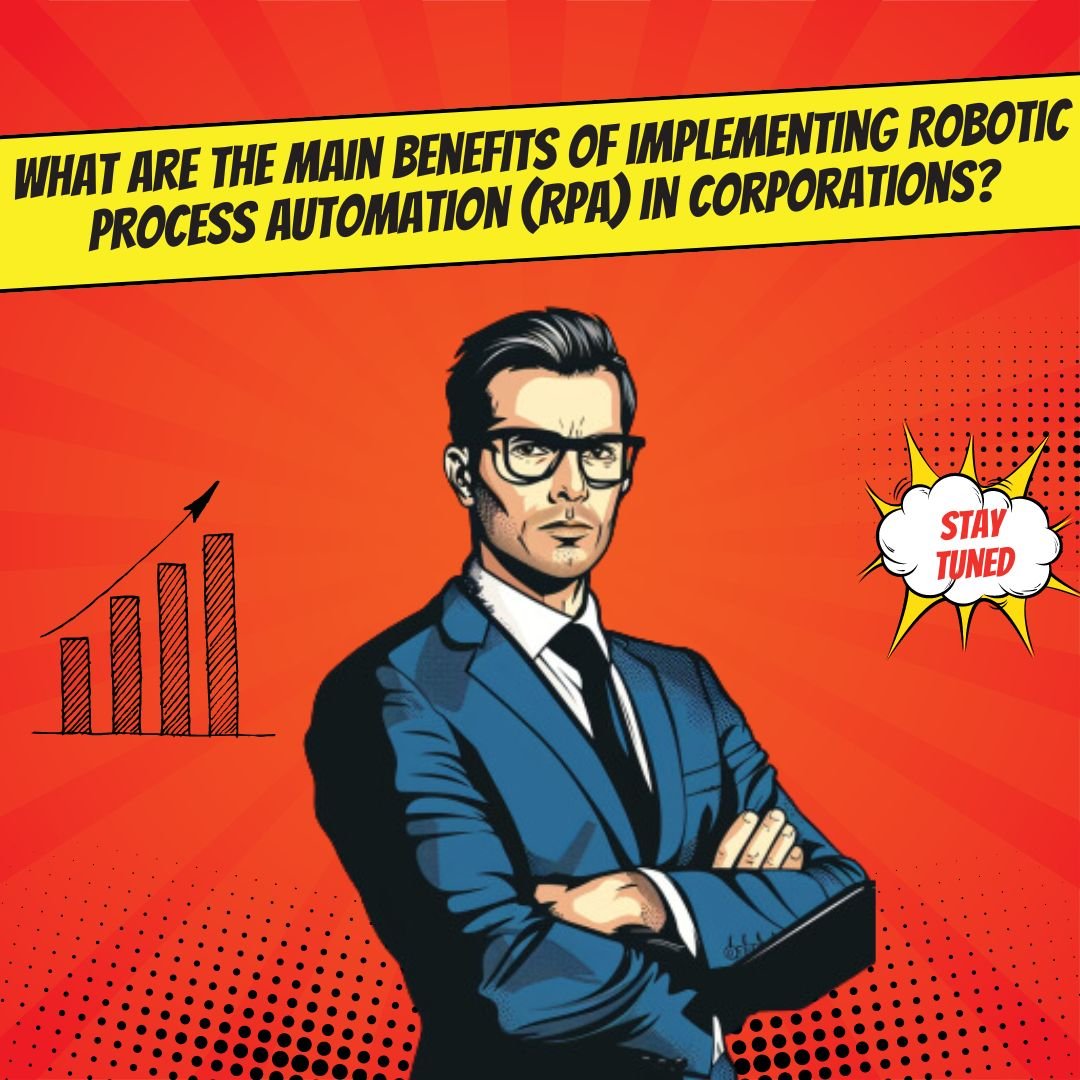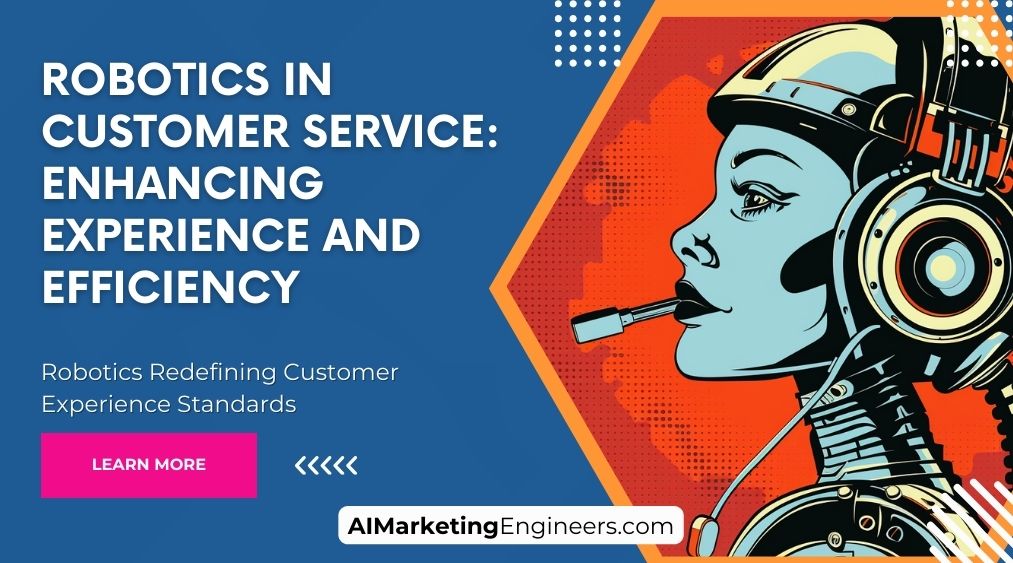Key Takeaways
✅ Increased Efficiency and Productivity: By adopting RPA, businesses are waving goodbye to the mundane. Imagine cutting down the time spent on routine tasks by half or more! That's the promise of RPA, turning the slow and steady into the swift and savvy. Has your business joined the efficiency revolution yet?
✅ Cost Savings and Improved Customer Experience: Who doesn't want to save money and make customers happier at the same time? With RPA, you're looking at slashing costs on repetitive tasks, all while boosting the quality of service your customers get. It's a win-win, but are you ready to reap these rewards?
✅ Enhanced Data Management and Analytics: Data overload? RPA can be your new best friend, sorting through mountains of data, giving you the nuggets of gold you need to make smart decisions. Are you leveraging this tech to outdo your competitors?

Introduction
Ever thought your business could do with a bit of a pick-me-up? Working harder than ever but feel like you're stuck in the slow lane? Robotic Process Automation (RPA) could be the turbo boost you're looking for. It's cutting through the corporate world's daily grind, making companies faster, leaner, and meaner. Think of RPA as your very own business efficiency superhero. But what's all the fuss about?
From the dawn of spreadsheets to the advent of email, we've seen technology change the game for businesses time and time again. But this—this is different. Think Data with a capital D, processes as smooth as silk, and robot assistants that make the tea (okay, maybe not the tea). RPA isn't just another blip on the corporate radar. It's a full-blown revolution.
As you sip your morning coffee and flick through this piece, you're on the verge of uncovering pearls of wisdom that could transform your company. We're not just talking fluffy "could be better" scenarios. We're diving into modern trends, cost-crunching tips, and customer-pleasing tricks that could send your revenues soaring and trim those budget waistlines.
Stay tuned—we've got a treasure trove of actionable insights and groundbreaking information just waiting for you. Ready to dive in?

Top Statistics
| Statistic | Insight |
|---|---|
| Global RPA market growth: Projected to grow from $1.57 billion in 2020 to $13.74 billion by 2030. (Source: Allied Market Research) | The explosive growth rate is a glaring indicator of the massive potential and widespread adoption RPA has in store. |
| BFSI industry RPA adoption: Expected to hold the largest market share with a CAGR of 30.1% from 2021 to 2030. (Source: Allied Market Research) | Shows significant traction of RPA within industries that are heavy in paperwork and routine tasks, hinting at where the most immediate impacts might be felt. |
| RPA in large enterprises: 78% of organizations with more than 1,000 employees are using RPA. (Source: Deloitte) | This statistic is a testament to RPA’s effectiveness in scaling operations, especially within hefty organizational structures that tend to be bogged down by complex processes. |
| Benefits of RPA: Reported to improve productivity (86%), reduce operational costs (78%), and increase employee satisfaction (70%). (Source: Deloitte) | Here we see the core appeal of RPA - not only does it bolster the bottom line, but it also has a positive ripple effect on the workforce. |
| Asia-Pacific RPA growth: Expected to witness the highest growth with a CAGR of 34.9% between 2021 and 2026. (Source: Mordor Intelligence) | Market expansion in this region is significant, suggesting a major leap for RPA technologies where economic development is on overdrive. |
Defining RPA and its Significance
Ever wonder how companies manage to keep up with the mountain of tasks they have to do day in, day out? Robotic Process Automation (RPA) steps into the spotlight here—it's like giving a computer a to-do list that it can finish in a snap. What's so important about it? Well, imagine all the time and money saved when machines take over the tedious tasks. RPA is fast becoming the invisible powerhouse behind businesses, making sure everything from paychecks to customer service is running smoothly without a hitch.

Historical Context and Evolution of RPA
Think of RPA as the quiet kid in class who grew up to be a tech whiz—its journey is quite something. It all started with simple screen scraping tools, and now? It's a full-blown sophisticated technology that's everywhere in the corporate maze. The real shake-up came with breakthroughs in artificial intelligence and learning algorithms. This evolution from a niche, geek-speak tool to a mainstream juggernaut has reshaped how companies operate on the daily.
Key Applications and Use Cases of RPA
RPA isn't picky—it fits in across all sorts of departments. Got a bunch of invoices to process in finance or loads of new recruits' details to log in HR? RPA has your back. It's all about taking those repetitive rule-based tasks off the hands of humans and letting the robots do their thing. What does that give us? Efficiency like never before, without someone having to spend hours on work that, frankly, no one enjoys.
Advantages and Benefits of RPA Implementation
So why consider using RPA at all? Imagine you're running a business—cost savings are always a win, right? And productivity, everyone’s chasing after it. RPA brings you both and throws in nearly flawless accuracy. No more human oopsies in the mix. Customers? They're getting answers faster than you can say, "Please hold". We're talking a business world where RPA helps everybody breathe a little easier.

Challenges and Considerations for RPA Adoption
But hold your horses—while RPA sounds like a dream, it's not all smooth sailing. Tech hurdles can pop up, and let's not forget the humans in the office. Change can be scary, right? People worry about robots taking over their jobs. Then there's the big question of keeping everything secure and under control. Businesses have to think these things through if they're going to dance with RPA without stepping on toes.
Future Trends and Developments in RPA
Looking ahead, RPA is getting even brainier. See, it's hitting the gym with AI and machine learning to lift heavier weights. Imagine robots learning on the job and getting better! That's the kind of future we're looking at. And it's not just for the big-shot companies; even the little guys might start seeing robots in their everyday work life. The workforce is changing, jobs are changing—RPA might be the co-worker of tomorrow.
This RPA journey isn't one to sleep on—it's a corporate revolution that's reshaping the face of employment, efficiency, and economic growth. It's the silent partner to businesses big and small, getting the job done swiftly and silently. Embracing RPA could mean the difference between thriving and just surviving. So, what do you say—are you ready to meet your new digital co-worker?

AI Marketing Engineers Recommendation
Recommendation 1: Incorporate RPA to Improve Customer Service Operations: Use RPA to automate repetitive tasks within your customer service department. The latest stats reveal that RPA can reduce call handling times by up to 40%. By deploying bots for routine inquiries, you allow your human team to focus on complex issues, enhancing customer satisfaction while cutting down on wait times. Have you thought about how much of your team's time is spent on tasks a bot could handle?
Recommendation 2: Align RPA with Employee Upskilling Initiatives: Current trends highlight that RPA is not here to replace jobs but to augment them. Inject RPA into your business processes alongside employee upskilling programs. RPA takes care of the mundane, enabling your workforce to tackle more creative and strategic tasks. What skills could your team develop if they had more time on their hands?
Recommendation 3: Select Versatile RPA Tools that Integrate with Existing Systems: When choosing an RPA tool, opt for one that offers seamless integration with your existing software suite. Platforms like UiPath and Automation Anywhere provide robust solutions that mesh well with various systems, streamlining implementation. By doing this, you minimise disruption and maximize productivity. Have you considered the adaptability of the tools you're looking to invest in?

Relevant Links
- Unlock Passive Income with Affiliate Marketing: Your 2024 Blueprint to Success!
- ChatGPT Showdown: Free vs Paid - Make the Smart Choice!
- Revolutionize Your Content Strategy with ChatGPT Marketing Mastery!
- Maximize Your Marketing Skills: Dive into Prompt Engineering Basics!
- Skyrocket Your Small Business with ChatGPT's Secret Powers!
- Stay on Top: Must-Know Digital Marketing Trends for 2024!
- Boost Your ROI Like a Pro: Google Ads + ChatGPT's Winning Formula!
- AI Advertising: Unlock Precision, Efficiency, and Sky-High Engagement!
- The Future is Now: Embrace AI & Transform Your Marketing Strategy!
- Redefine SEO & PPC: AI's Game-Changing Strategies Unleashed for 2024!
- AI Chatbots: Revolutionizing Customer Service with Instant Gratification!
- SEO Secrets for 2024: Unleash the Power of Visibility & Traffic!
- AI & Data Analysis: Future-Proof Your Business Intelligence Now!
- Lead Generation Revolution: AI's Top Techniques for Business Growth!
- Innovative Marketing Mastery: Strategies to Shake Up the Scene in 2024!
- The Ultimate Marketing Plan for Startups: Launch, Grow, and Thrive in 2024!
- E-Commerce Domination: Pro Strategies for Traffic & Sales Explosion!
- Data-Driven Success: Harness the Power of Advanced Marketing Analytics!
- Top-Tier AI Tools: Transform Your Business Strategy and Stay Ahead!
Conclusion
So, what have we really learned about this whole robotic process automation deal? RPA has made quite the entrance into the business scene, transforming the corporate world as we know it. From its humble beginnings to its now essential role in efficiency and productivity, it's like watching a child prodigy grow up to be a game-changer in the big leagues.
Think about it – who doesn't want to save time and money while boosting accuracy? That's like hitting the workplace jackpot. But it's not just about the savings or the slick precision; it’s also about giving folks the chance to ditch the monotonous tasks and focus on the creative, satisfying work that machines just can't replicate. It’s like having a robot sidekick to handle the tedious stuff while you tackle the big-picture projects.
Sure, with anything new there’s a bit of hesitation. Can I trust this technology? What about job security? It's natural to wonder about the unknown and whether these bots will make things better or just more complicated. But let me nudge you toward this thought: RPA isn’t just some passing trend – it's a sign of what's to come. It’s about working smarter, not harder.
Looking ahead, imagine RPA shaking hands with AI and machine learning. We're not just stepping into efficiency; we're leaping into a world where technology takes us further than we ever dreamed. And this, my friend, is an invite to get on board. Think of RPA as an opportunity to redesign your workday, to breathe new life into the roles and industries that form the backbone of our economy.
But here’s the million-dollar question: are you ready to embrace the change and make it work for you? Can you reimagine your workflow, your job, or even your entire industry with a robotic helping hand? Because trust me, the robots aren’t just coming; they're here, and they're ready to team up.

FAQs
Question 1: What is Robotic Process Automation (RPA)?
Answer: RPA is like having a digital assistant that takes care of those boring tasks you dread. Imagine a software robot, or "bot", that can handle repetitive stuff like filling out forms or organizing files with the precision of a meticulous librarian. It's all about being efficient without getting tired or making mistakes.
Question 2: How does RPA differ from traditional automation?
Answer: Think of RPA as a chameleon. It blends into any computer environment without needing special changes or tweaks. While traditional automation is like building a robot from scratch for each new task, RPA just takes a seat at your computer and gets going, no complex programming needed.
Question 3: What are the benefits of implementing RPA in the corporate world?
Answer: With RPA, companies are like runners with the best shoes – they go faster and further with less effort. It's about speed, saving money, doing things without errors, keeping customers happy, and giving the human brain space to dream up big ideas.
Question 4: What types of tasks are suitable for RPA?
Answer: RPA loves the jobs we find dull – anything that feels like you're a human copy machine. It's perfect for tasks where you can pretty much predict every step, like entering heaps of data, handling invoices, or churning out the same reports every week.
Question 5: How does RPA integrate with existing systems and processes?
Answer: RPA is like the friendly new neighbor who fits right into the community. It works with what you've already got, using the systems you use every day. No need to shake things up or introduce complicated tech stuff.
Question 6: Can RPA replace human workers?
Answer: Rather than taking jobs, RPA is about teamwork, helping people avoid the humdrum tasks so they can tackle the fun stuff requiring a human touch – like brainstorming, problem-solving, and innovating.
Question 7: How does RPA impact job roles and responsibilities?
Answer: With RPA stepping in, it's like getting a promotion from coal miner to diamond cutter. People get to shift their focus to more meaningful and satisfying work, adding extra sparkle to their day-to-day responsibilities.
Question 8: What are the potential risks and challenges of implementing RPA?
Answer: Introducing RPA might not be all smooth sailing – it can be like adopting a pet and not being ready for it. There's the adjustment period, making sure there's a clear plan, dealing with data that may have issues, and the upkeep to make sure everything stays on track.
Question 9: How can organizations ensure a successful RPA implementation?
Answer: For a successful RPA adoption, it's like preparing for a marathon. Companies need to plan their route, make sure leadership is holding the map, pick the right paths to run on, train their people, and keep the energy up for the long haul.
Question 10: What are the best practices for managing and optimizing RPA processes?
Answer: Keeping RPA in tip-top shape is key – it's like regularly servicing your car. Set clear goals, keep an eye on performance, and stay updated with regular check-ins and training. Keep it running smoothly, and you'll go far.

Academic References
- Willcocks, L., Lacity, M. C., & Craig, A. (2015). Robotic Process Automation: A Strategic Lever for Business Process Transformation. Journal of Information Technology Teaching Cases, 5(2), 1-16. In this insightful article, the authors dive into the role of Robotic Process Automation (RPA) as a transformative force in business processes, touching on the potential benefits such as cost reduction, improvement in quality, and increased business agility.
- Beals, M. (2017). Robotic Process Automation: The Next Step for Shared Services. Deloitte Insights. This report discusses how RPA can revolutionize shared services by automating routine tasks, which in turn can allow employees to focus their efforts on more complex, value-added work.
- Willcocks, L., Lacity, M. C., & Craig, A. (2017). Robotic Process Automation: The Next Frontier for Shared Services and Outsourcing? Strategic Outsourcing: An International Journal, 10(1), 4-22. The trio of authors examines the burgeoning potential of RPA within the domains of shared services and outsourcing, discussing not only the advantages but also the setbacks and the strategic pathway for effective execution.
- Kapsali, V., Zachariadis, M., & Vitalis, N. (2019). The Impact of Robotic Process Automation on Business Processes: A Systematic Literature Review. International Journal of Information Management, 49, 180-194. This systematic review offers a comprehensive examination of how RPA impacts business processes, emphasizing how it can lead to heightened efficiency, cost savings, and improved customer experiences.
- Willcocks, L., Lacity, M. C., & Craig, A. (2018). Robotic Process Automation: A New Era of Efficiency for Financial Services? Journal of Financial Transformation, 45, 1-16. The article scrutinizes the emerging adoption of RPA in the financial services industry, highlighting how it can streamline operations, reduce expenses, and bolster regulatory compliance.







